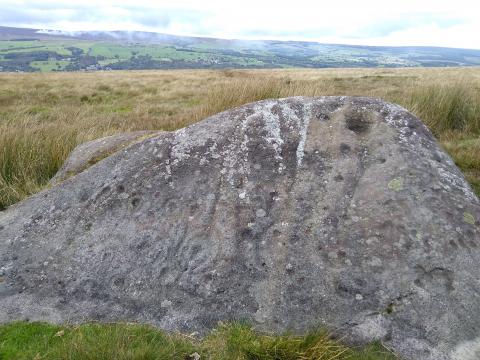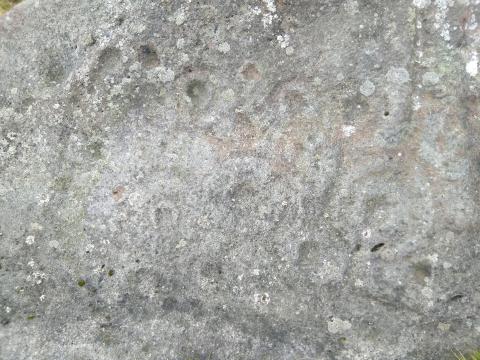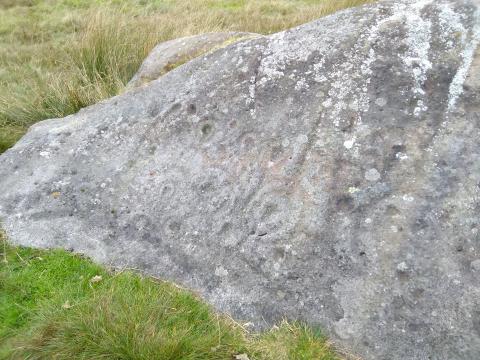Badger Stone

I went to see the Badger Stone this week. This is a large rock on Rombalds Moor in Yorkshire. It looks nothing like a badger, but is covered by over a hundred ancient markings from the Bronze Age or earlier. 95 cups, several rings, even shapes which might represent human beings are found on its surface. Why would our distant ancestors invest so much artistic energy on such a place? It commands fine views and though I do believe in art for art’s sake, it still seems something of a mystery. Paul Bennett, writing for the The Northern Antiquarian, cites the Yorkshire historian Arthur Raistrick who explained that badger meant a ‘corn dealer, corn miller or miller’s man’. Bennett therefore suggests that it was a place where grain merchants from the various valleys would meet to exchange and barter that most precious of commodities- food. The path that runs by it was therefore a trade route. Traders from Wharfedale might meet their colleagues from Airedale to sell excess stock or obtain what they were unable to grow themselves, averting starvation at home. The place where such exchange happened was not only marked by a conspicuous rock, but one that was highly decorated, perhaps with images which represented life and movement, two things dependent on sufficient supplies of millet and barley.
With some exceptions over the last few weeks and months, our shops and eateries have been wonderfully well stocked. Societies more dependent on local harvests always have a more tenuous existence; the next harvest would determine if the coming winter would be your last. We Westerners carry excessive weight, such is our taste and enjoyment of cheap, easily obtained foods; no bartering at the Badger Stone for us. Yet spiritually, we are gaunt and emaciated for want of food. Seven decades of secularisation have left us weak and lethargic. We who still attend places of worship and read our Bibles (a book simultaneously condemned as boring by the irreligious and incendiary by the pseudo-religious) are like our ancient ancestors climbing Rombalds Moor to obtain the food we need. Perhaps this is why so many of our churches and chapels are architecturally and aesthetically pleasant; like the decorators of the Badger Stone, we want the places at we obtain our food to be as beautiful as they are useful.
Don’t go to church- either as a worshipper or a tourist- just to admire the colours, the large windows or the old-fashioned woodwork. Go for the food which your ailing soul most needs.
He maketh peace in thy borders, and filleth thee with the finest of the wheat. Psalm 147:14



- Log in to post comments


 Sunday Worship 10.45am & 6.00pm
Sunday Worship 10.45am & 6.00pm